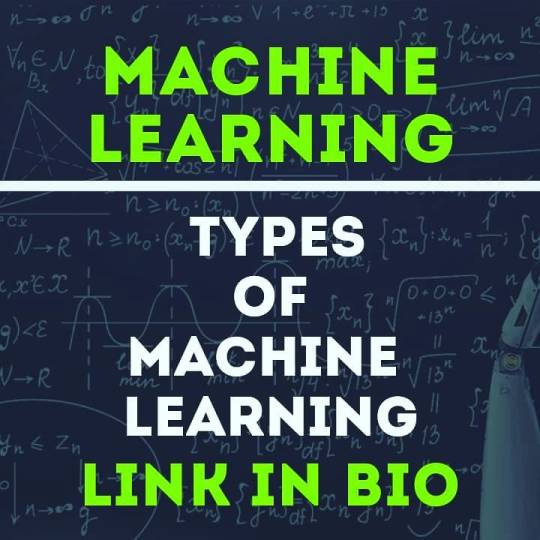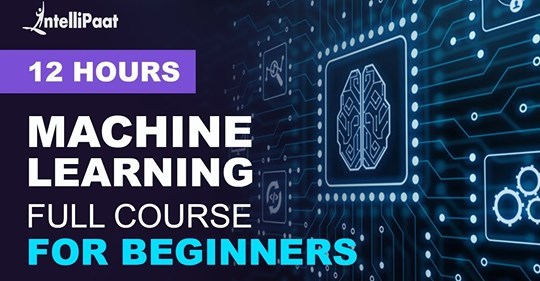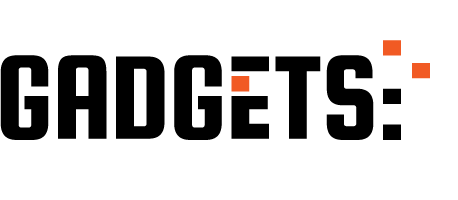#machinelearningtutorial
Explore tagged Tumblr posts
Text
What is a Neural Network? A Beginner's Guide

Artificial Intelligence (AI) is everywhere today—from helping us shop online to improving medical diagnoses. At the core of many AI systems is a concept called the neural network, a tool that enables computers to learn, recognize patterns, and make decisions in ways that sometimes feel almost human. But what exactly is a neural network, and how does it work? In this guide, we’ll explore the basics of neural networks and break down the essential components and processes that make them function. The Basic Idea Behind Neural Networks At a high level, a neural network is a type of machine learning model that takes in data, learns patterns from it, and makes predictions or decisions based on what it has learned. It’s called a “neural” network because it’s inspired by the way our brains process information. Imagine your brain’s neurons firing when you see a familiar face in a crowd. Individually, each neuron doesn’t know much, but together they recognize the pattern of a person’s face. In a similar way, a neural network is made up of interconnected nodes (or “neurons”) that work together to find patterns in data. Breaking Down the Structure of a Neural Network To understand how a neural network works, let's take a look at its basic structure. Neural networks are typically organized in layers, each playing a unique role in processing information: - Input Layer: This is where the data enters the network. Each node in the input layer represents a piece of data. For example, if the network is identifying a picture of a dog, each pixel of the image might be one node in the input layer. - Hidden Layers: These are the layers between the input and output. They’re called “hidden” because they don’t directly interact with the outside environment—they only process information from the input layer and pass it on. Hidden layers help the network learn complex patterns by transforming the data in various ways. - Output Layer: This is where the network gives its final prediction or decision. For instance, if the network is trying to identify an animal, the output layer might provide a probability score for each type of animal (e.g., 90% dog, 5% cat, 5% other). Each layer is made up of “neurons” (or nodes) that are connected to neurons in the previous and next layers. These connections allow information to pass through the network and be transformed along the way. The Role of Weights and Biases In a neural network, each connection between neurons has an associated weight. Think of weights as the importance or influence of one neuron on another. When information flows from one layer to the next, each connection either strengthens or weakens the signal based on its weight. - Weights: A higher weight means the signal is more important, while a lower weight means it’s less important. Adjusting these weights during training helps the network make better predictions. - Biases: Each neuron also has a bias value, which can be thought of as a threshold it needs to “fire” or activate. Biases allow the network to make adjustments and refine its learning process. Together, weights and biases help the network decide which features in the data are most important. For example, when identifying an image of a cat, weights and biases might be adjusted to give more importance to features like “fur” and “whiskers.” How a Neural Network Learns: Training with Data Neural networks learn by adjusting their weights and biases through a process called training. During training, the network is exposed to many examples (or “data points”) and gradually learns to make better predictions. Here’s a step-by-step look at the training process: - Feed Data into the Network: Training data is fed into the input layer of the network. For example, if the network is designed to recognize handwritten digits, each training example might be an image of a digit, like the number “5.” - Forward Propagation: The data flows from the input layer through the hidden layers to the output layer. Along the way, each neuron performs calculations based on the weights, biases, and activation function (a function that decides if the neuron should activate or not). - Calculate Error: The network then compares its prediction to the actual result (the known answer in the training data). The difference between the prediction and the actual answer is the error. - Backward Propagation: To improve, the network needs to reduce this error. It does so through a process called backpropagation, where it adjusts weights and biases to minimize the error. Backpropagation uses calculus to “push” the error backwards through the network, updating the weights and biases along the way. - Repeat and Improve: This process repeats thousands or even millions of times, allowing the network to gradually improve its accuracy. Real-World Analogy: Training a Neural Network to Recognize Faces Imagine you’re trying to train a neural network to recognize faces. Here’s how it would work in simple terms: - Input Layer (Eyes, Nose, Mouth): The input layer takes in raw information like pixels in an image. - Hidden Layers (Detecting Features): The hidden layers learn to detect features like the outline of the face, the position of the eyes, and the shape of the mouth. - Output Layer (Face or No Face): Finally, the output layer gives a probability that the image is a face. If it’s not accurate, the network adjusts until it can reliably recognize faces. Types of Neural Networks There are several types of neural networks, each designed for specific types of tasks: - Feedforward Neural Networks: These are the simplest networks, where data flows in one direction—from input to output. They’re good for straightforward tasks like image recognition. - Convolutional Neural Networks (CNNs): These are specialized for processing grid-like data, such as images. They’re especially powerful in detecting features in images, like edges or textures, which makes them popular in image recognition. - Recurrent Neural Networks (RNNs): These networks are designed to process sequences of data, such as sentences or time series. They’re used in applications like natural language processing, where the order of words is important. Common Applications of Neural Networks Neural networks are incredibly versatile and are used in many fields: - Image Recognition: Identifying objects or faces in photos. - Speech Recognition: Converting spoken language into text. - Natural Language Processing: Understanding and generating human language, used in applications like chatbots and language translation. - Medical Diagnosis: Assisting doctors in analyzing medical images, like MRIs or X-rays, to detect diseases. - Recommendation Systems: Predicting what you might like to watch, read, or buy based on past behavior. Are Neural Networks Intelligent? It’s easy to think of neural networks as “intelligent,” but they’re actually just performing a series of mathematical operations. Neural networks don’t understand the data the way we do—they only learn to recognize patterns within the data they’re given. If a neural network is trained only on pictures of cats and dogs, it won’t understand that cats and dogs are animals—it simply knows how to identify patterns specific to those images. Challenges and Limitations While neural networks are powerful, they have their limitations: - Data-Hungry: Neural networks require large amounts of labeled data to learn effectively. - Black Box Nature: It’s difficult to understand exactly how a neural network arrives at its decisions, which can be a drawback in areas like medicine, where interpretability is crucial. - Computationally Intensive: Neural networks often require significant computing resources, especially as they grow larger and more complex. Despite these challenges, neural networks continue to advance, and they’re at the heart of many of the technologies shaping our world. In Summary A neural network is a model inspired by the human brain, made up of interconnected layers that work together to learn patterns and make predictions. With input, hidden, and output layers, neural networks transform raw data into insights, adjusting their internal “weights” over time to improve their accuracy. They’re used in fields as diverse as healthcare, finance, entertainment, and beyond. While they’re complex and have limitations, neural networks are powerful tools for tackling some of today’s most challenging problems, driving innovation in countless ways. So next time you see a recommendation on your favorite streaming service or talk to a voice assistant, remember: behind the scenes, a neural network might be hard at work, learning and improving just for you. Read the full article
#AIforBeginners#AITutorial#ArtificialIntelligence#Backpropagation#ConvolutionalNeuralNetwork#DeepLearning#HiddenLayer#ImageRecognition#InputLayer#MachineLearning#MachineLearningTutorial#NaturalLanguageProcessing#NeuralNetwork#NeuralNetworkBasics#NeuralNetworkLayers#NeuralNetworkTraining#OutputLayer#PatternRecognition#RecurrentNeuralNetwork#SpeechRecognition#WeightsandBiases
0 notes
Photo

Types of Machine Learning.
#codewarun #codewitharun #machinelearningtutorial #machinelearning #datascience #datasciencetutorial #coder #coderlife https://youtu.be/D7weeT2fnZ8 https://www.instagram.com/p/CITUf4_pSJB/?igshid=1lur8m7griuzl
#codewarun#codewitharun#machinelearningtutorial#machinelearning#datascience#datasciencetutorial#coder#coderlife#education
1 note
·
View note
Photo

Machine Learning Tutorial | Learn Machine Learning 12 hours | Intellipaat ☞ https://morioh.com/p/68e6756ad4e5?f=5c21fb01c16e2556b555ab32
#MachineLearningTutorial #MachineLearning #LearnMachineLearning #MachineLearningAlgorithms
1 note
·
View note
Video
youtube
This machine learning tutorial covers what is machine learning, machine learning algorithms like linear regression, binary classification, decision tree, random forest and unsupervised algorithm like k means clustering in detail with complete hands on demo.
0 notes
Photo

IgmGuru is starting Weekend/Weekday batch on Machine Learning Online training. To get an additional benefit, Enroll Today !! STAY HOME, STAY SAFE and KEEP LEARNING!! https://www.igmguru.com/machine-learning-ai/machine-learning-certification-training/
#machinelearning #machinelearningtraining #machinelearningtutorial #machinelearningcourse #education #fightcorona #covid19 #coronavirus #stayathome #workfromhome #staysafe #opportunity #corona #dontpanic #covid_19 #prevention #illness #quarantine #training #onlinetraining #learning #newlearning #technology #keeplearning
#machine learning#onlinetraining#technology#education#onlinecourses#ML#machinelearningtutorial#machinelearningtraiing#covid_19#coronavirus#keeplearning#stayhome#staysafe#learners
0 notes
Link
This machine learning tutorial covers what is machine learning, machine learning algorithms like linear regression, binary classification, decision tree, random forest and unsupervised algorithm like k means clustering in detail with complete hands on demo. There is machine learning complete project and machine learning interview questions as well in this machine learning full course video to prepare you for the job interview.
0 notes
Text
Vídeo EXCLUSIVO - Testamos o PIVO Suporte com IA de rastreamento Facil
Uníco vídeo no Brasil do Pivo. Um suporte com inteligencia artificial de rastreamento de pessoas e animais. São tantas funções que o Pivo executa, que teremos um post detalhado dele aqui no site para poder falar com mais profundidade do produto. Read the full article
#artificialintelligence#artificialintelligencerobot#canaltechnology#canaltecnologia#getpivoreview#inteligênciaartificial#inteligenciaartificialelfindeltrabajo#machinelearning#machinelearningtutorial#Pivo#Review#Suporteinteligente#Teste
0 notes
Link
Blend InfoTech Is Best for Python Training in pune and Python Classes in pune covers an introduction and Python . This Python Training Course And Class Room Training
#machinelearningtutorial#introductiontomachinelearningwithpython#pythonmachinelearningbook#pythonmachinelearningprojects#machinelearningpythoncourse#pythonmachinelearninglibrary#machinelearningusingpythonpdf#pythonmachinelearningbyexamplepdf
0 notes
Photo

AWS Live - 1 | AWS Machine Learning Tutorial | Amazon Machine Learning | AWS Training | Edureka http://ehelpdesk.tk/wp-content/uploads/2020/02/logo-header.png [ad_1] AWS Training: https://www.edurek... #amazonmachinelearning #awscertification #awscertificationtraining #awscertifiedcloudpractitioner #awscertifieddeveloper #awscertifiedsolutionsarchitect #awscertifiedsysopsadministrator #awsedureka #awslive #awsmachinelearning #awsmachinelearningexample #awsmachinelearningtutorial #awsonlinetraining #awss3 #awstraining #awstutorial #binaryclassification #ciscoccna #cloudcomputing #cloudcomputingmodels #cloudmachinelearning #comptiaa #comptianetwork #comptiasecurity #cybersecurity #edureka #ethicalhacking #introductiontoawsmachinelearning #it #kubernetes #linux #machinelearning #machinelearningedureka #machinelearningtutorial #microsoftaz-900 #microsoftazure #modeltraining #networksecurity #servicemodels #software #windowsserver #ytccon
0 notes
Video
youtube
What is Machine Learning? Machine Learning Tutorial For Beginners
0 notes
Photo

Complete data science tutorial in 6 hours. Link: https://youtu.be/GtL0QPIg4uE #codewarun #codewitharun #datasciencetutorial #machinelearningtutorial #datascience #machinelearning #coder #coders #programming https://www.instagram.com/p/CIV2XFwpteA/?igshid=1vnw7wbn1bae
#codewarun#codewitharun#datasciencetutorial#machinelearningtutorial#datascience#machinelearning#coder#coders#programming
0 notes
Video
youtube
Solving Missing Data Problem in Python Machine Learning
0 notes
Link
This machine learning tutorial covers what is machine learning, machine learning algorithms like linear regression, binary classification, decision tree, random forest and unsupervised algorithm like k means clustering in detail with complete hands on demo. There is machine learning complete project and machine learning interview questions as well in this machine learning full course video to prepare you for the job interview.
0 notes
Photo

Blend InfoTech 48 Hr Live Online Course By Experts. Top Industry Professionals and Academicians
#machinelearningtutorial#introductiontomachinelearningwithpython#pythonmachinelearningbook#pythonmachinelearningprojects#machinelearningpythoncourse#pythonmachinelearninglibrary#machinelearningusingpythonpdf
0 notes
Photo

Simple Exploratory Data Analysis with Pandas-Profiling Package Python http://ehelpdesk.tk/wp-content/uploads/2020/02/logo-header.png [ad_1] https://www.linkedin.com/in/asho... #aiwithpython #androiddevelopment #angular #c #css #dataanalysis #dataanalysiswithpandasprofiling #datascience #datasciencecourseinbangalore #datasciencecourseinchennai #datasciencecourses #datasciencetutorials #datasciencewithpython #datamitesinstitute #deeplearning #development #docker #iosdevelopment #java #javascript #machinelearning #machinelearningtutorials #machinelearningwithpython #node.js #pandaspythontutorials #pandastutorials #python #pythontutorials #react #unity #webdevelopment
0 notes
Photo

Lifecycle of Machine Learning. Link: https://youtu.be/zC7k4JnZcGs #machinelearning #machinelearningtutorial #datascience #datasciencetutorial #codewitharun #codewarun #lifecycle #coder https://www.instagram.com/p/CIQ2TnOpuae/?igshid=uaqe99o4hrxh
#machinelearning#machinelearningtutorial#datascience#datasciencetutorial#codewitharun#codewarun#lifecycle#coder
0 notes